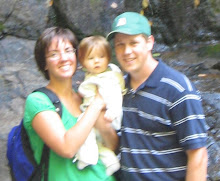(FIRST, I feel it's important to mention that I am not qualified to give anyone advice on training their own horses. I'm writing these posts primarily so I can have a record of what I have done with Arabee. If you read my blog, and decide you want to try what I'm doing for yourself - just realize that I ain't no horse trainer!)
So, my horse already knows how to walk, trot, canter, and whoa on the longe line. She'll do it in a mannerly fashion without snorting, bucking, and farting like a wild thing, too. So, start with that as a goal with just a halter.
From there, it's time to tack up: saddle, snaffle bridle with flash or dropped noseband to support the bit, sliding side reins, and in Arabee's case, a crupper. I started with the longe line clipped to the halter. Later I moved to running the longe line through the bit, over the crown, then clip to the offside of the bit.
Adjust the sliding sidereins so that with the horse standing still, the sidereins are gently taut, not tight. Send the horse out at a trot, looking to establish a good gait rhythm, and so that the pair of rear legs, and pair of front legs, go apart about the same distance - then you know both fore and hind end are exerting about the same amount. (this may not make sense, probably not a good way to describe it w/out pictures)
Once you've achieved the first goal of establishing a good trotting rhythm with both front and back of the horse working equally - the next goal is to get the horse to reach for the bit. As I've read, this may happen nearly simultaneosly. Verbally praise the horse whenever they've even *thought* about doing what you want. If they've made a particularly grand effort, praise enthusiastically and gently ask for a walk - a good reward for a job well done.
Keep in mind your horse's fitness level - if you find those nostrils flaring - look for a chance to ask for a walk. "They" also say to change directions every 5 minutes to avoid fatiguing one side over the other.
In my experience, the first session or two I thought "wow, this is a waste of time my horse is NOT getting it at ALL!" but by the third longing session I saw some serious breathtakingly beautiful moments of improvement. Apparantly, this type of work is quite difficult for a fat pasture-potato, so it's best (per the books) to keep the first several sessions around 15 minutes in length, and not to expect the horse to be able to maintain the long-and-low, reaching-for-the-bit, engaging-the-hindquarters frame for more than a few strides at a time.
Gradually, Arabee has been able to go from a few strides of just long and low, to half a lap, to now nearly two full laps. And it's not just a simple long-and-low frame - it's difficult to describe, but quite lovely: all 4 legs, her back, belly, hindquarters, neck, and poll are all working energetically forward in a rounded, lovely Arabian fashion. But the very nice thing about using the sliding sidereins adjusted like I described above is that the action of the bit is gentle and encourages Arabee to stretch toward the bit, but yet she can absolutely raise and lower her head without punishing her mouth like she would have in fixed sidereins (even with a rubber donut). It allows her to build the correct muscles, but lets her take a break when she needs to due to fatigue.
This post is long enough. There's more to this initial longe work, but I'll save it for the next post.
Stormy's Memorial: It's Getting There!
2 months ago


